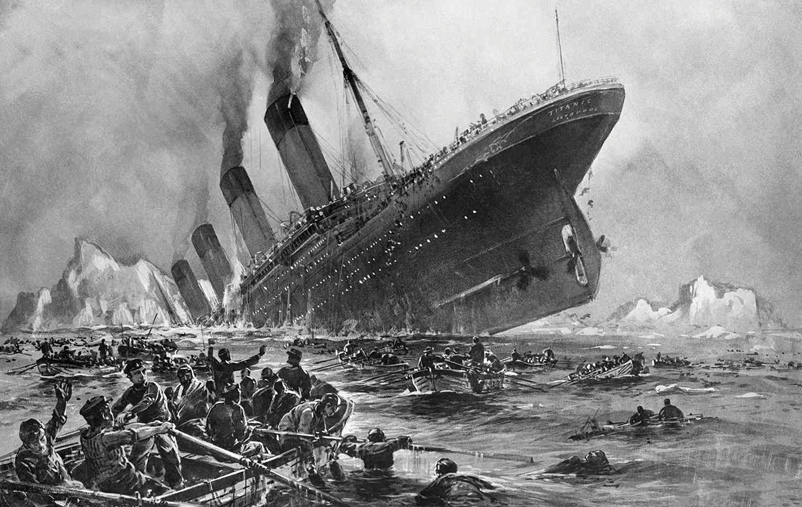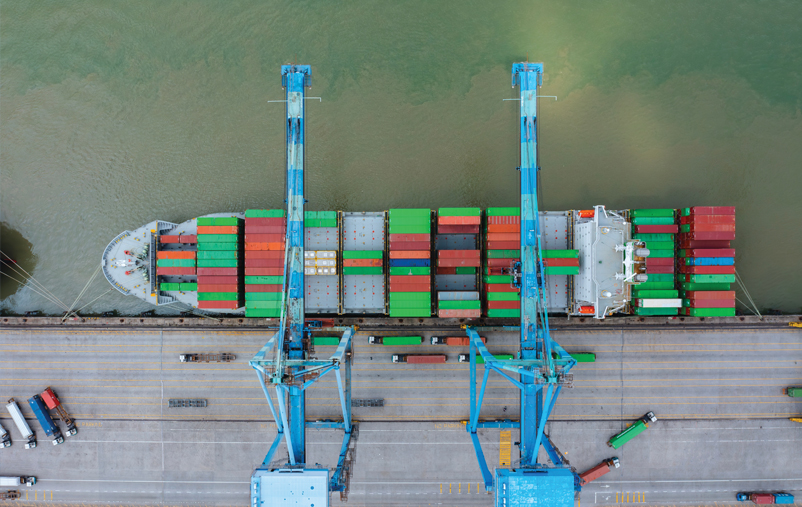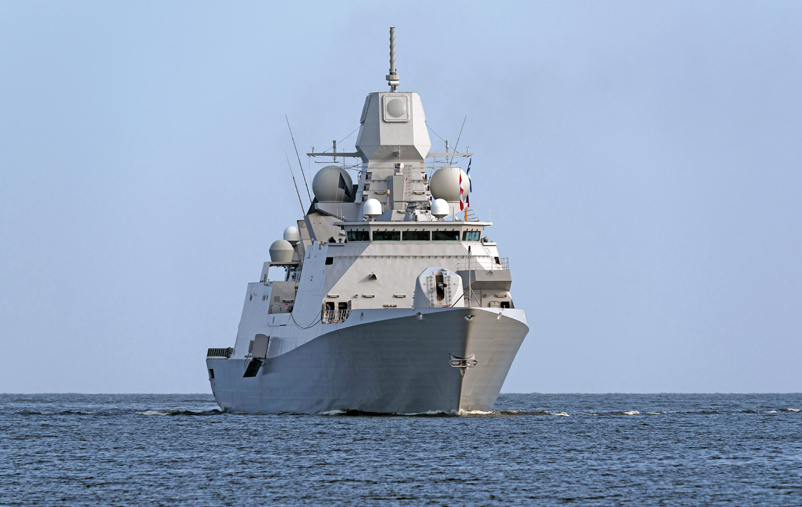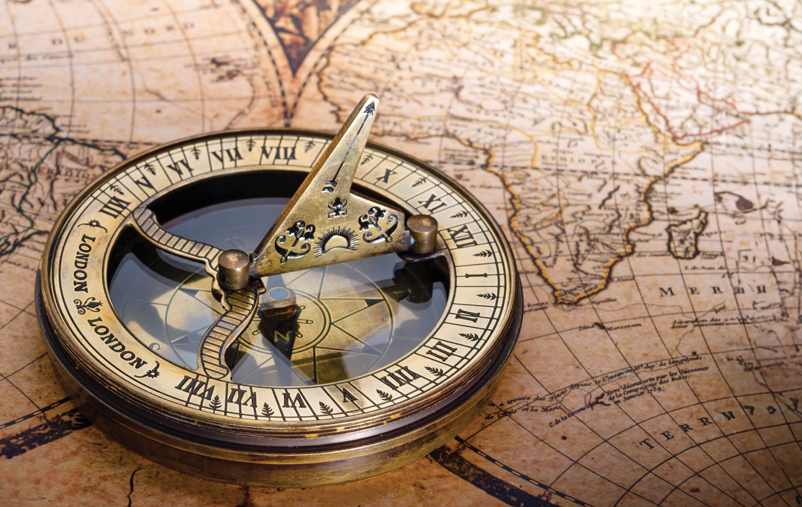»For a considerable period, the oceans have adhered to the principle of freedom of movement on the seas, which was established in the 17th century and fundamentally limited national rights and jurisdiction over the oceans to a narrow belt of sea surrounding the country’s coasts. Thus the remaining expanses of the seas enjoyed freedom for all and did not belong to any specific country. However, at the beginning of the 19th century, a compelling drive to extend national entitlements to maritime resources emerged.
This was accompanied by growing international concern about the impacts of fishing fleets travelling long distances on coastal fish stocks and the extent of the threat posed by pollution and the discharge of waste from ships and oil tankers carrying hazardous cargo on sea routes worldwide, thus endangering coastal resorts and all forms of life in the oceans.
This has led various naval forces worldwide to compete for control over surface waters and even beneath the sea, leaving the international community scrambling to adopt treaties and agreements governing activities and movement in seas and oceans.
The history of international maritime treaties and agreements dates back to ancient times when maritime laws were established for trade and maritime communications, as well as conflict prevention.
As decades went by, maritime treaties and conventions evolved and underwent major changes reflecting the dynamic nature of the shipping industry, with the framework for international maritime treaties and conventions taking its modern form in the 19th century.
One major milestone in this evolution was the 1910 Brussels Convention, which introduced the concept of a uniform maritime law for states. Major maritime disasters such as the sinking of the Titanic in 1912 paved the way for subsequent treaties and conventions addressing various aspects of maritime operations, such as the International Regulations for Preventing Collisions at Sea, the International Convention for the Safety of Life at Sea (SOLAS), and more.
International maritime treaties and agreements can be defined as agreed-upon rules and systems for maritime activities to ensure the safety, security, and sustainability of international shipping and navigation.
These agreements are critical to managing the global maritime transportation industry, providing a framework for cooperation and regulations to ensure the safe and environmentally sustainable operation of ships.
Such agreements are important because they provide a common set of rules and regulations governing maritime activities between countries, to help ensure the safety of ships and crews, protect the marine environment, facilitate trade, enhance international cooperation, and improve maritime safety measures.
In pursuit of these goals, the international community joined forces to establish the International Maritime Organization (IMO) in 1959. This specialized organization operates under the United Nations umbrella and is instrumental in developing and maintaining international maritime regulations. Moreover, this organization has played a fundamental role in shaping and implementing numerous treaties and agreements to enhance safety, security, and environmental standards in the maritime transportation industry.

The Importance of International Maritime Agreements
The significance of international maritime agreements stems from their global impact on the maritime shipping industry.
These agreements provide maritime activities with a unified approach, thus promoting standardization and consistency in rules and regulations across borders.
They address crucial issues such as ship safety, pollution prevention, seafarers’ rights, and liability, ensuring that all the parties of maritime operations adhere to the same rules.
Moreover, such agreements promote international collaboration, fostering trust within the global maritime community.
Additionally, the exchange of technical expertise and practices enables countries to develop their maritime capabilities and improve their maritime shipping infrastructure. By creating equal opportunities for all participants, these agreements foster fair competition and ensure equal opportunities in trade and economic growth.
Throughout history, international maritime agreements have had a profound impact on global trade by ensuring the efficiency, reliability, and safety of maritime shipping.
These unified rules facilitate the seamless connectivity between ports and ease the smooth flow of goods across national borders. Thus enhancing trade relations, encouraging economic growth, and promoting international cooperation.
Furthermore, maritime agreements help with risk reduction and accident prevention, protecting human lives and valuable cargo.
By establishing comprehensive safety and security standards, these agreements instil confidence in all parties involved, whether they are the consumers, investors or stakeholders, thus reducing potential disruptions in global trade caused by accidents or security threats.
Key Features
The majority of adopted maritime agreements can be categorized into three groups:
1. Maritime Safety
2. Maritime Pollution Prevention
3. Liability and compensation, particularly regarding damages resulting from pollution.
Moreover, there are other agreements addressing facilitation, load measurement, and unlawful activities such as piracy and armed robbery against ships.
The evolution of maritime regulations and treaties has been driven by technological advancements, emerging challenges, and evolving societal expectations.
For instance, the International Convention for the Safety of Life at Sea (SOLAS), was first adopted in 1914 following the Titanic disaster. This international agreement underwent several amendments, with the latest being in 1974 and remains widely recognized and implemented in the maritime industry.
SOLAS specifies the requirements for the construction, stability, equipment, and operational procedures of ships to ensure maritime safety.
Another significant agreement is the International Maritime Pollution Convention (MARPOL), adopted in 1973, addressing pollution prevention from ships by regulating various pollutants such as oil, chemicals, sewage, and waste.
Its subsequent amendments introduced stricter standards, reinforcing the maritime industry’s commitment to environmental protection.
Moreover, the International Ship and Port Facility Security Code (ISPS Code) was established and adopted in 2002, in response to the increasing container shipping and potential threats posed by terrorist activities.
The ISPS Code establishes a comprehensive framework to enhance the security of ships and port facilities worldwide. Additionally, the growing recognition of the importance of sustainable practices led to the inclusion of environmental considerations in maritime treaties and agreements.
For instance, the Ballast Water Management Convention, adopted in 2004, aims to prevent the introduction of invasive species into new environments through ship ballast water. This convention highlights the industry’s commitment to mitigating environmental impacts and preserving aquatic ecosystems.
Furthermore, the United Nations Convention on the Law of the Sea (UNCLOS) was adopted in 1982, providing a comprehensive legal framework for all maritime activities.
Ratified by 168 countries, UNCLOS establishes a global system of laws and regulations governing the world’s oceans and seas, covering various issues such as shipping, navigation, maritime pollution, maritime boundaries, and maritime disputes.

This convention emphasizes the interconnectedness of ocean issues, requiring comprehensive solutions and addressing a wide range of topics, including regional waters, exclusive economic zones, deep-sea mining, and marine scientific research.
UNCLOS sets a 12-nautical-mile territorial sea boundary from the coast, extends maritime boundaries to 200 nautical miles from the shore and provides mechanisms for resolving maritime disputes.
The increasing unlawful activity of pirates in recent years threatening maritime security and causing loss of life and property damage, or taking sailors as hostages, led to significant disruptions in trade and navigation, financial losses for ship owners, increased insurance premiums and security costs, as well as higher costs for consumers and producers, and environmental damage.
Thus the International Maritime Organization (IMO) and the United Nations have adopted additional complementary decisions to the rules of the Law of the Sea Convention to address piracy.
Moreover, other agreements and conventions were adopted including:
• The International Convention on Standards of Training, Certification and Watchkeeping for Seafarers (STCW) in its amended versions for 1995 and 2010.
• The International Regulations for Preventing Collisions at Sea of 1972.
• The International Maritime Facilitation Convention of 1965.
• The International Convention on Search and Rescue at Sea of 1979.
• The Convention for the Suppression of Unlawful Acts Against the Safety of Maritime Navigation of 1988.
• The International Convention for Safe Containers of 1972.
• The International Convention on the Intervention on the High Seas in Cases of Oil Pollution Casualties of 1969.
• The Convention on the Prevention of Marine Pollution by Dumping of Wastes and Other Matter of 1972.
• London Protocol of 1996.
• The International Convention on Oil Pollution Preparedness, Response and Co-operation of 1990.
• The Protocol on Preparedness, Response and Co-operation to Pollution Incidents by Hazardous and Noxious Substances of 2000.
• The International Convention on Liability and Compensation for Damage in Connection with the Carriage of Hazardous and Noxious Substances of 1996 (and its Protocol of 2010).
International Military Maritime Cooperation
The changing maritime environment has driven several agreements between the U.S. Navy and some of its key partners in recent years. As potential maritime threats grow, and low-level threats persist, the burden on the U.S. Navy increased due to increased demands and changing priorities.
Additionally, major allied naval forces can benefit from the broad capabilities of the U.S. Navy.
In Early 1998, the Military Maritime Consultative Agreement (MMCA) was signed as part of the international military maritime cooperation between the People’s Republic of China and the United States to enhance mutual understanding regarding the activities conducted by the naval forces of both countries.
This agreement aims to provide an operational-level exchange for discussing maritime and operational safety issues and avoiding accidents on the high seas.
Future discussions may explore unique cases, such as sea rescue or humanitarian assistance.
In 2005-2006, the then-U.S. Navy Chief of Naval Operations, Admiral Mike Mullen, developed a vision to increase global naval partnerships to address a range of maritime security challenges. This vision became known as the (1,000-Ship Navy), implicitly recognizing that no single navy, not even the U.S. Navy, can handle all maritime challenges alone.
Since then, the U.S. has launched various partnership initiatives, and the latest U.S. Navy maritime strategies, published between 2007 and 2015, included the keyword (cooperation) in numerous instances, including in relatively benign maritime environments.
Moreover, with the growing concerns about the return of great power competition and a more contentious maritime domain, the idea of cooperation was expressed with stronger phrases.
On November 20, 2019, naval leaders from Japan, the United Kingdom, and the United States signed a new trilateral agreement to enhance symbolic cooperation.
The agreement was signed aboard a British Royal Navy aircraft carrier, which was anchored off Annapolis on the east coast of the United States. Following the Japanese-British-American maritime agreement, the French, British, and American naval forces reached a more robust cooperation agreement, especially in anti-submarine warfare and aircraft carrier operations.
Additionally, France and Britain took steps to increase maritime cooperation under the Lancaster House Agreement, while British and American naval forces signed an agreement to enhance the integration of aircraft carrier operations in the future.
Other significant actors in the maritime domain include China and Russia who have conducted a series of joint exercises. However, the extent to which these evolve into a strategic partnership is uncertain.
While there is a growing desire, both regionally and globally, to see increased maritime security cooperation in the Indian Ocean, tensions and sensitivities impede progress.
Another driving force for expanding cooperation is capability sharing. The development of F-35B operations at sea has benefited cooperation between Britain and the United States, especially with U.S. support for the renewal of the British aircraft carrier’s capabilities. This cooperation may extend to include Japan and possibly South Korea.
Major submarine and frigate procurement operations are already leading to stronger strategic relationships between the Royal Australian Navy and the Navies of France and Britain.
Furthermore, the design of the future joint frigate should see increased collaboration and interoperability between naval forces in Australia, Canada, and Britain. How these aspirations are achieved and where the main focus of cooperation will be depends on operational requirements and the operating environment.

Future Trends in International Maritime Agreements:
As the maritime industry continues to evolve, future trends in international maritime agreements are expected to address emerging challenges and leverage technological advancements.
One of the main areas of focus is the integration of digital technologies to enhance efficiency, transparency, and safety in maritime operations. Initiatives such as electronic documentation, automated cargo tracking, and remote ship monitoring are likely to be integrated into upcoming treaties and agreements.
Additionally, sustainability and environmental considerations will play a more prominent role in shaping maritime agreements, with increasing concerns about climate change and the need to reduce greenhouse gas emissions. Treaties are likely to impose stricter regulations on ship emissions, promote alternative fuels, and encourage sustainable practices throughout the maritime shipping industry.
Conclusion
International maritime treaties and agreements have evolved significantly throughout history, shaping the global shipping industry and ensuring its safe and sustainable operation.
From the Brussels Convention of 1910 to the establishment of the International Maritime Organization and the adoption of key agreements such as the International Convention for the Safety of Life at Sea (SOLAS) and the MARPOL Convention, maritime treaties have paved the way for collaboration, unified regulations, and enhanced safety measures.
Moreover, future trends in international maritime agreements will focus on digitization, sustainability, and environmental considerations, with compliance and enforcement remaining a crucial part of their effectiveness. By supporting these treaties and agreements, countries contribute to the smooth flow of goods, economic growth, and the protection of our oceans.
» By: Retired Colonel Eng. Khaled Al-Ananzah
(Advisor and Trainer in Environmental and Occupational Safety)













